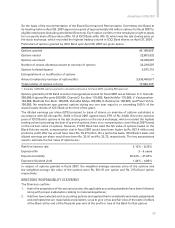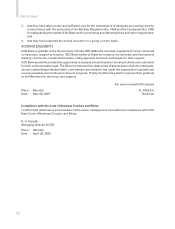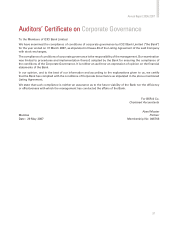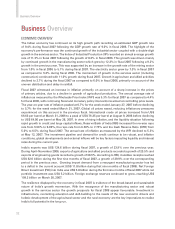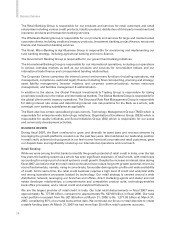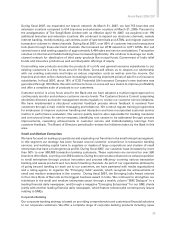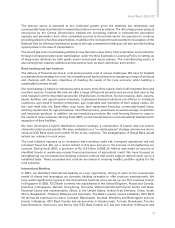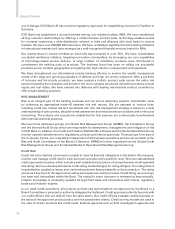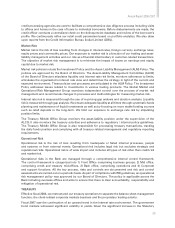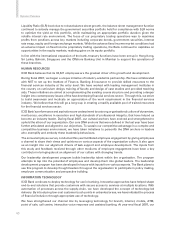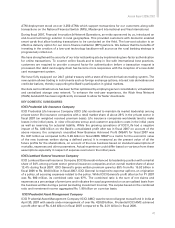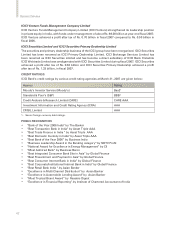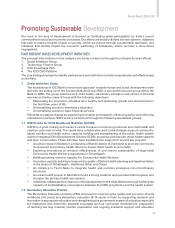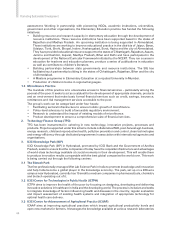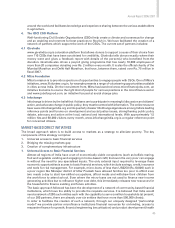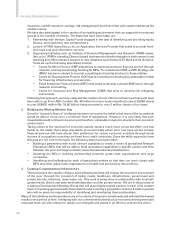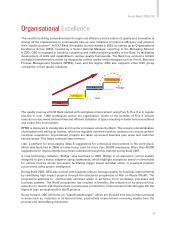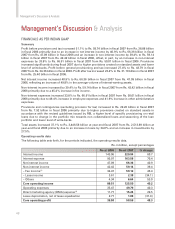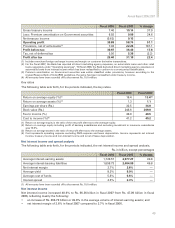ICICI Bank 2007 Annual Report Download - page 41
Download and view the complete annual report
Please find page 41 of the 2007 ICICI Bank annual report below. You can navigate through the pages in the report by either clicking on the pages listed below, or by using the keyword search tool below to find specific information within the annual report.
39
Annual Report 2006-2007
credit processing agencies are used to facilitate a comprehensive due diligence process including visits
to offices and homes in the case of loans to individual borrowers. Before disbursements are made, the
credit officer conducts a centralised check on the delinquencies database and review of the borrower’s
profile. We continuously refine our retail credit parameters based on portfolio analytics. We also draw
upon reports from the Credit Information Bureau (India) Limited (CIBIL).
Market Risk
Market risk is the risk of loss resulting from changes in interest rates, foreign currency exchange rates,
equity prices and commodity prices. Our exposure to market risk is a function of our trading and asset-
liability management activities and our role as a financial intermediary in customer-related transactions.
The objective of market risk management is to minimise the impact of losses on earnings and equity
capital due to market risk.
Market risk policies include the Investment Policy and the Asset-Liability Management (ALM) Policy. The
policies are approved by the Board of Directors. The Asset-Liability Management Committee (ALCO)
of the Board of Directors stipulates liquidity and interest rate risk limits, monitors adherence to limits,
articulates the organisation’s interest rate view and determines the strategy in light of the current and
expected environment. These policies and processes are articulated in the ALM Policy. The Investment
Policy addresses issues related to investments in various trading products. The Global Market and
Operational Risk Management Group exercises independent control over the process of market risk
management and recommends changes in processes and methodologies for measuring market risk.
Interest rate risk is measured through the use of re-pricing gap analysis and duration analysis. Liquidity
risk is measured through gap analysis. We ensure adequate liquidity at all times through systematic funds
planning and maintenance of liquid investments as well as by focusing on more stable funding sources
such as retail deposits in the long-term. We limit our exposure to exchange rate risk by stipulating
position limits.
The Treasury Middle Office Group monitors the asset-liability position under the supervision of the
ALCO. It also monitors the treasury activities and adherence to regulatory / internal policy guidelines.
The Treasury Middle Office Group is also responsible for processing treasury transactions, tracking
the daily funds position and complying with all treasury-related management and regulatory reporting
requirements.
Operational Risk
Operational risk is the risk of loss resulting from inadequate or failed internal processes, people
and systems or from external events. Operational risk includes legal risk but excludes strategic and
reputational risks. Operational risk is of wide import and includes all types of risk other than credit risk
and market risk.
Operational risks in the Bank are managed through a comprehensive internal control framework.
The control framework is categorized into 1) Front Office comprising business groups, 2) Mid office,
comprising credit and treasury mid-offices, 3) Back office, comprising operations and 4) Corporate
and support functions. All the key process, risks and controls are documented and risk and control
assessments are carried out on a periodic basis. As part of compliance with RBI guidelines, an operational
risk management policy was approved by our Board of Directors. The policy is applicable across the
Bank including overseas offices and aims to ensure that there is clear accountability, responsibility and
mitigation of operational risk.
TREASURY
Effective fiscal 2004, we restructured our treasury operations to separate the balance sheet management
function, the client-related corporate markets business and the proprietary trading activity.
Fiscal 2007 saw the continuation of an upward trend in the interest rate environment. The government
bond markets witnessed significant volatility in yields. Given the significant increase in the Statutory


